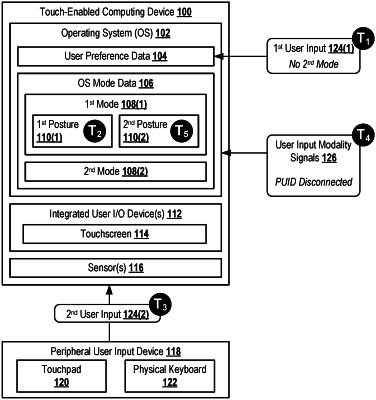| CPC G06F 3/04886 (2013.01) [G06F 1/1647 (2013.01); G06F 1/1654 (2013.01); G06F 3/03545 (2013.01); G06F 3/04817 (2013.01); G06F 3/1454 (2013.01); G06F 9/452 (2018.02)] | 20 Claims |

|
1. A touch-enabled computing device, comprising:
a processor; and
memory in communication with the processor, the memory having computer-readable instructions stored thereupon that, when executed by the processor, cause the processor to:
access operating system mode data that defines at least a first mode for an operating system and a second mode for the operating system, the first mode for the operating system configured to execute according to a first posture and a second posture;
execute the operating system in the first mode according to the first posture;
receive an indication that the operating system is not to toggle from executing in the first mode to executing in the second mode based on a predefined trigger event;
identify, based on user input modality signals, an occurrence of the predefined trigger event; and
cause, based on the indication and the occurrence of the predefined trigger event, the operating system to switch from executing in the first mode according to the first posture to executing in the first mode according to the second posture.
|